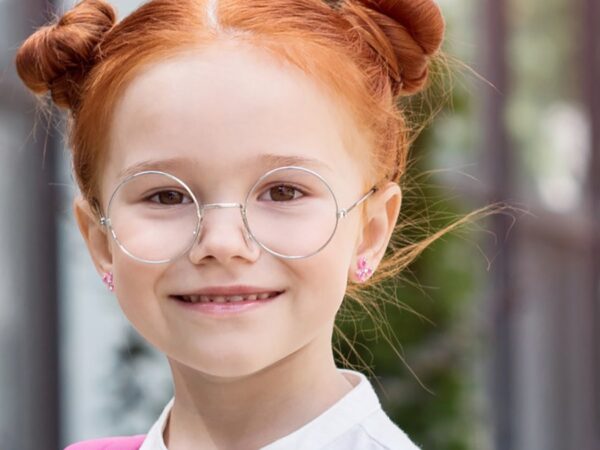Short-sighted even more common among children
The numbers are shocking: At the moment, the prognosis is that every second child becomes short-sighted during their school years. By the year 2050, it is believed that 2/3 of all children in Europe will suffer from nearsightedness. This is expected to happen even though the treatment is relatively easily. The problem isn’t the thick lenses, but more the various eye conditions, which are causing the nearsightedness.
Why now?
There have always been short-sighted people. So what causes the rise in nearsightedness in children these days? The main factor for the short-sightedness is the growth of the eye length. A normal, average eye length is 23,5mm and every added millimeter results in -3,0 dpt. This occurs mainly in school children at the age from 6 to 17 years, where the eye growth is happening the fastest. If you add the ever growing expectations at school and the extra time spent in form of a screen (such as of smartphones, tablets, laptops, computers or TVs), you can understand the problem. This problematic trend has already had an impact in Asia and is now being recognized here in Europe.
Achievements at school and in sport
Small children are normally slightly far-sighted and the nearsightedness only starts at around the age of 6 to 10 years. The earlier this begins, the higher the risk of becoming short-sighted (-6.0 dpt or more). Children, whose parents are short-sighted are at a higher risk of suffering from the same phenomenon. To avoid this having an impact on school and sport achievements, you should observe your child and if in doubt, make an appointment with an optometrist or an eye specialist.

The consequences of nearsightedness
Children are certainly suffering under the decreasing vision and having to wear thick glasses. But the outcome only shows in adult years.
Nearsightedness and its after effects are nowadays the main cause in Europe for blindness. It is short-sightedness that multiplies other eye illnesses by a factor of 3 to 40.
When untreated, the greatest risks an adult eye can face is the detachment of the cornea and myopic degeneration of the macula (maculopathy). Also possible is getting cataracts or glaucoma.

Act preventative
Myopia is the medical term for short-sightedness. Its control is based on several columns:
Myopia control = lifestyle
The first category concerns your lifestyle, and you can actively promote this with your child. Spend at least 1.5 hours per day outside in the sunlight. Limit your child’s screen time and reading time to 2 hours a day. Make sure to maintain at least a 35cm distance to the book/device when reading.
Myopia control = eye specialist
An eye specialist can prescribe highly diluted Atropine eye drops ( 0.01%), which can slow down the growth of the eye length.
Myopia = optometrist
Certified opticians and optometrists can apply specialized myopia control contact lenses or glass lenses. The soft contact lenses are worn during the day, and they have multiple vision zones to decelerate the growth of the eye length. The hard lenses (Ortho-K) are worn at night, to cope without glasses during the day. The glass lenses also have several zones and are similar to progressive-addition lenses.

Conclusion
Leading a healthy lifestyle is a good way to prevent nearsightedness. This means eating healthily, getting enough sleep, spending time outside in the daylight and limiting time in front of a screen. But if in doubt, contact a specialist immediately and get an eye check-up. This could then be followed by treatments, such as adjusting your lifestyle, eye drops (Atropine), wearing specific contact lenses or glasses.







